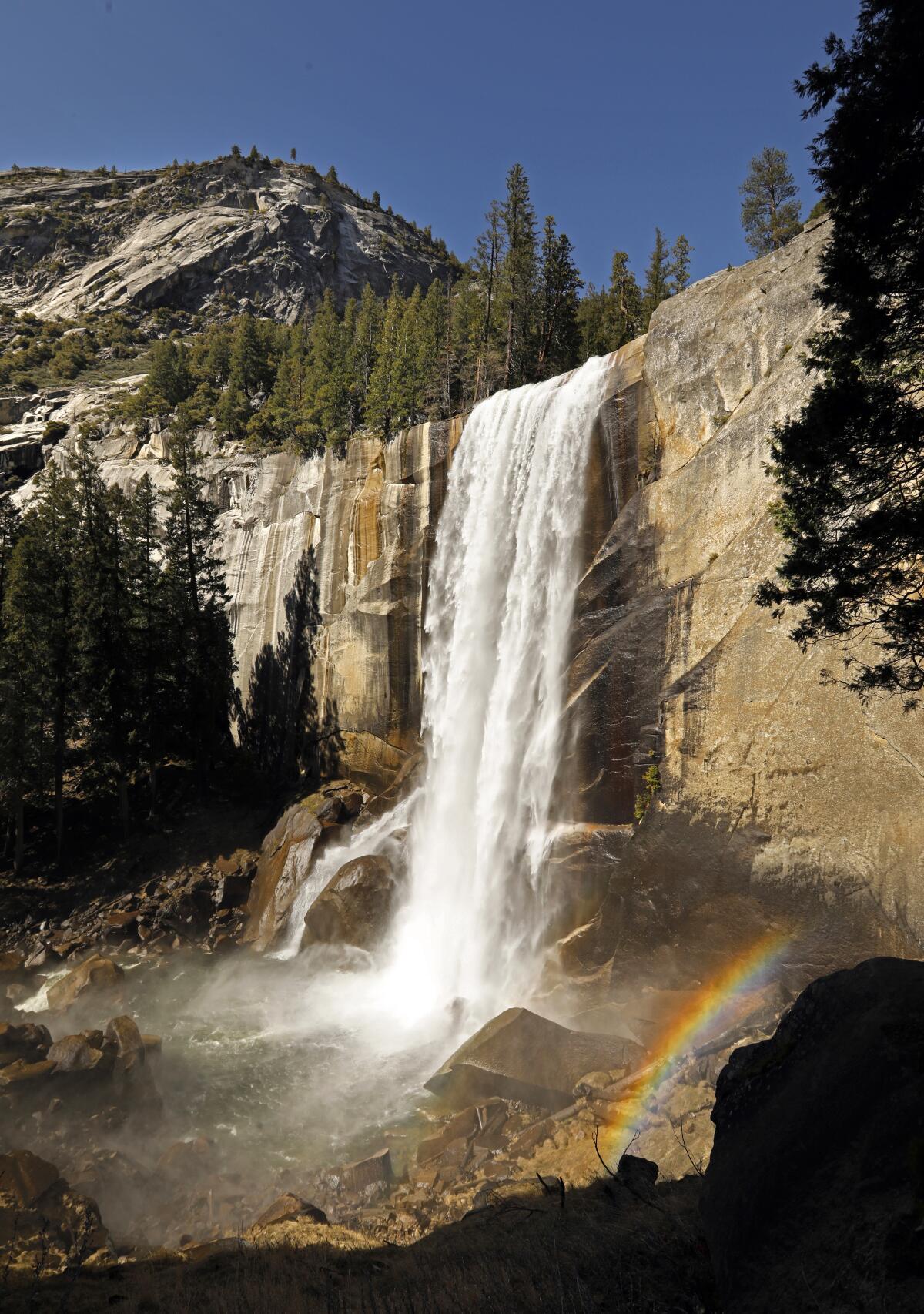Melting snow is making Yosemite’s waterfalls extra spectacular

- Share via
The record-setting snowpack over the winter has recharged the waterfalls at Yosemite National Park, which is home to one of the tallest waterfalls in the world.
Yosemite has several waterfalls, most of which have peak runoff in May or June when most of the snowmelt occurs.
The largest waterfall at the park is Yosemite Falls, 2,425 feet above the valley floor. It flows from November through July, with peak flow occurring in May. One of the tallest waterfalls in the world, Yosemite Falls is made up of Upper Yosemite Fall, the middle cascades and Lower Yosemite Fall.
The national park also posted on social media about Vernal and Nevada falls.
“The granite stair section leading up to Vernal Fall has hikers completely drenched,” an employee for the park wrote on Instagram. “Wear shoes with good grip, and either layer on full raingear or immerse yourself in nature’s free shower.”
Visitors also posted videos of gushing waterfalls at the park.
In April, the California Department of Water Resources recorded 126.5 inches of snow and a snow water equivalent to 54 inches — a measure of how much water the snowpack actually contains. The statewide snowpack was 61.1 inches, which was 237% of normal for April 3.
“After the driest three years on record and devastating drought impacts to communities across the state, DWR has rapidly shifted to flood response and forecasting for the upcoming snowmelt,” Karla Nemeth, department director, said in a news release. “We have provided flood assistance to many communities who just a few months ago were facing severe drought impacts.”
Large parts of Yosemite National Park were closed at the end of April to the public because of flooding fears. The park was also closed from late February to mid-March, when a daily snowfall record was broken.
The park currently has an alert about dangers around waterways due to flooding.
“Rivers and creeks in Yosemite are at or near flood stage,” according to the alert. “Stay out of rivers and creeks. Stay away from rock adjacent to rivers; wet rock is extremely slick. Do not cross bridges that have water flowing over them.”
More to Read
Sign up for Essential California
The most important California stories and recommendations in your inbox every morning.
You may occasionally receive promotional content from the Los Angeles Times.









